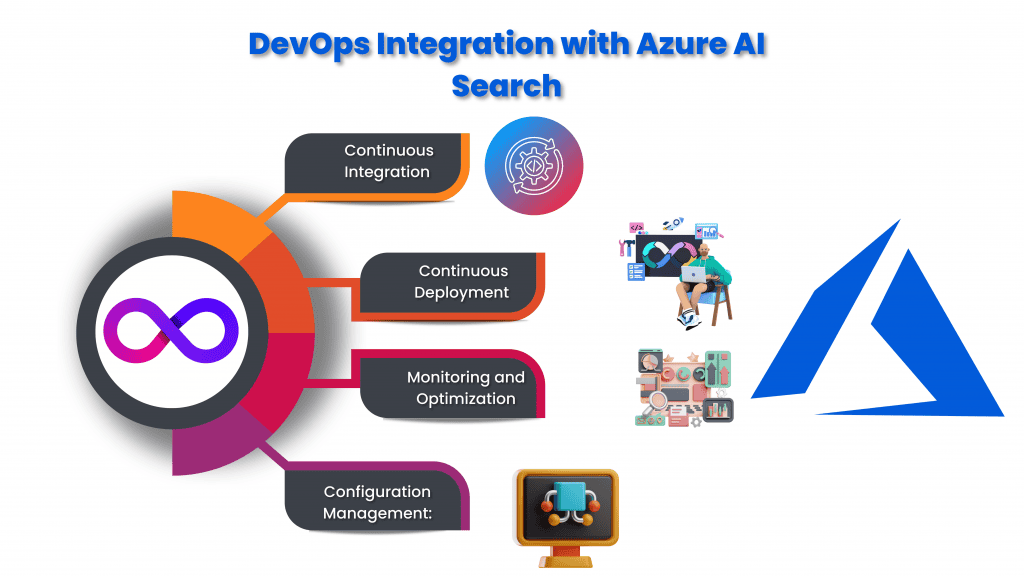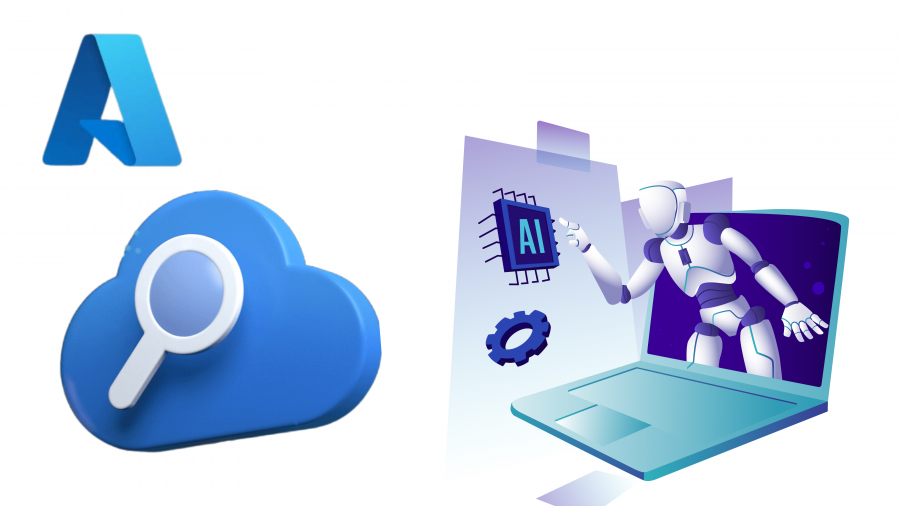Unlocking the potential of data is crucial in today’s digital era, and Azure AI Search stands at the forefront of this revolution. In this blog, we’ll delve into the seamless integration and robust capabilities of Azure AI Search, shedding light on how it can shape the future of search functionality.
Table of Contents:
1. Understanding the Need for DevOps

DevOps aims to break down silos between development and operations teams, emphasizing collaboration, automation, and continuous feedback. Testing plays a crucial role in achieving these goals by ensuring that code changes are thoroughly checked for quality, security, and functionality before they are deployed.
Azure Infrastructure as a Service (IaaS) Integration
Azure AI Search effortlessly integrates with Azure’s Infrastructure as a Service (IaaS), providing a scalable and flexible environment for deploying search solutions. This synergy ensures that businesses can efficiently manage resources, optimizing performance while minimizing costs.
Azure API Management for Seamless Connectivity
One of the standout features of Azure AI Search is its integration with Azure API Management. This connection streamlines the process of accessing and managing APIs, offering a unified experience. Businesses can leverage this capability to enhance connectivity, allowing for the smooth flow of data between applications.
Azure Vulnerability Assessment for Enhanced Security
Security is paramount in the digital landscape, and Azure AI Search addresses this concern with its built-in vulnerability assessment tools. These tools help identify and rectify potential security risks, ensuring that your search functionality is not only powerful but also secure.
How Azure AI Search Works
Azure AI Search operates on a foundation of cutting-edge technologies, making it a powerful and versatile search solution. Here’s a step-by-step breakdown of how it works:

- Data Ingestion:
- Begin by ingesting your data into Azure AI Search.
- Supported data sources include Azure Blob Storage, Azure SQL Database, and more.
- Indexing:
- Azure AI Search organizes the ingested data into searchable indexes.
- Customizable indexing options allow for tailored search experiences.
- Query Processing:
- When a user enters a query, Azure AI Search processes it against the indexed data.
- Advanced algorithms ensure relevant and accurate search results.
- Scalability:
- Azure AI Search scales effortlessly to handle varying workloads.
- This scalability ensures optimal performance during peak usage periods.
DevOps Integration with Azure AI Search
DevOps teams can seamlessly integrate Azure AI Search into their workflows:

- Continuous Integration (CI):
- Incorporate Azure AI Search into your CI pipeline for automated testing and deployment.
- Continuous Deployment (CD):
- Automate the deployment of search solutions, ensuring rapid and reliable releases.
- Monitoring and Optimization:
- Utilize Azure DevOps tools to monitor the performance of your search solutions.
- Implement optimizations based on insights gained through monitoring.
- Configuration Management:
- Store configuration settings, such as connection strings and authentication details, securely using Azure Key Vault or a similar solution.
- Configure your CI/CD pipeline to retrieve sensitive information from a secure vault during deployment.
Conclusion
Azure AI Search emerges as a game-changer, seamlessly integrating with Azure services to provide a comprehensive search solution. By addressing the need for DevOps, offering IaaS compatibility, and enhancing security through vulnerability assessments, Azure AI Search empowers businesses to navigate the future with confidence.
In Summary:
In the dynamic landscape of intelligent search, Azure AI Search stands out as a key player, aligning with modern development practices and infrastructure needs. As businesses continue to prioritize efficient search functionality, Azure AI Search proves to be an invaluable asset, shaping the future of data discovery and retrieval.


